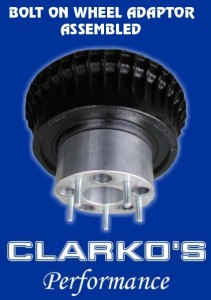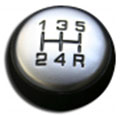Posts Tagged ‘aluminium’
What are wheel spacers
Wheel Spacers – Why are they needed?
Wheel Spacers, as the name suggests, are used to increase the space between the wheel and the car body. Wheel spacers are commonly made of aluminium and are installed between the car’s hub and wheel. Wheel Spacers are used for a variety of reasons:
- Better stance: The owners of cars sometimes wish for a better stance for their cars to increase the stability of the car at higher speeds especially related to the braking, maintaining the stability of the car at high speeds, or while maneuvering curves. One of the ways of enhancing the stance of your car is by increasing the wheelbase of your car. Wheel spacers are an easy-to-install option for you to achieve the same. Good quality wheel spacers are very useful for both racing cars and normal cars. They cost much less as compared to buying a set of wider tires for the same purpose. Wheel spacers help in increasing the distance between the axle and the wheel hub hence maximizing the wheelbase without actually changing the tires or the suspension equilibrium.
- Correct the incorrect offset: Wheel Spacers are also good to have when you want to install different offset rims in your car or reposition the offset of the rim of your car. If you like to do off-the-road or all-terrain driving, then wheel spacers must be used to increase the space between the wheels of the car and the car itself. This provides a safer, more stable driving experience in rugged terrains. Aluminium wheel spacers are ideal for All Terrain Vehicles as they provide an additional balance required for all terrain driving or for race cars.
- Better Appearance: Wheel Spacers provide a more aggressive, macho look to large cars. They are also utilized for better handling of the car.
Essentially, there are two types of wheel spacers: Slide-on wheel spacers and Bolt-on wheel Spacers.
- Slide-on Wheel Spacers: These Wheel Spacers are most commonly used. These just slide on the existing bolts. You need to simply remove the rim/wheel from the axle, slide the wheel spacer over the axle studs, and refit the rim/wheel to the axle. These wheel spacers are available in different thicknesses, ranging from 3, 6, 10 and 12 mm.
- Bolt-on Wheel Spacers: These are bolted to the car’s hub on which the wheels are then fitted. To do this, the rim/wheel is first removed. The wheel spacer is installed over the end of the axle studs. A standard style wheel nut is used to hold the wheel spacer to the end of the axle. It must be ensured that the axle stud or wheel nut does not protrude past the outside face of the bolt on the wheel spacer. The other set of holes will have the studs protruding, and the rim/wheel will be fitted here. Bolt-on wheel spacers are available in thicknesses of 35 and 50 mm.
You can also find alloy wheel spacers which come in billet aluminium or cast aluminium. Aluminium or a combination of aluminium and another alloy provides the much needed additional strength to the wheel spacer and are the most desired in the market today. The installation of wheel spacers is very simple as explained above, and your manufacturer can guide you further. Try aluminium wheel spacers for a better road performance.
Technical Data
Holden HQ is 5 x 120.6 mm PCD
Holden commodore is 5 x 120 mm PCD
Ford stud pattern is 5 x 114.3mm PCD
For more information CLICK HERE






